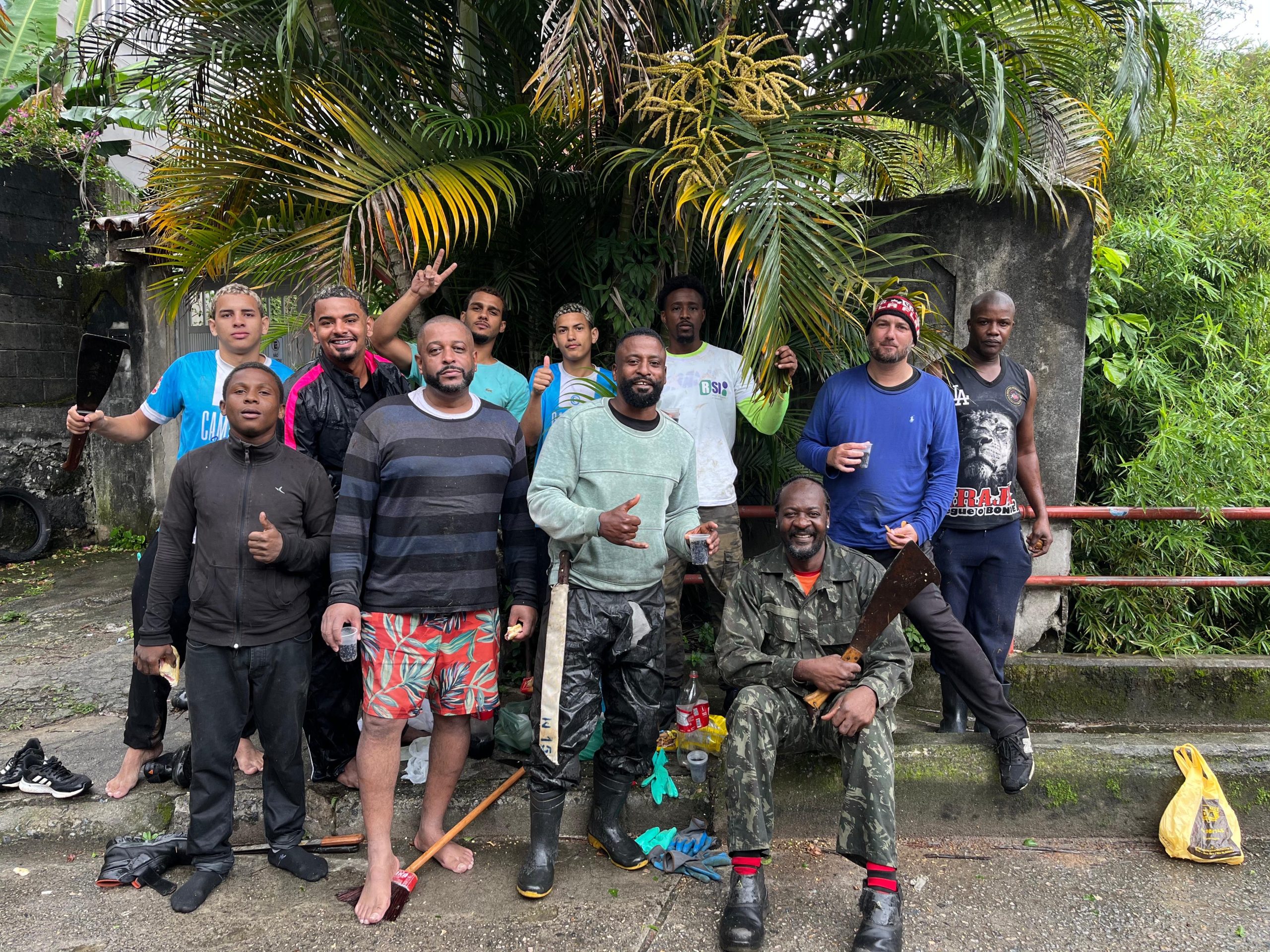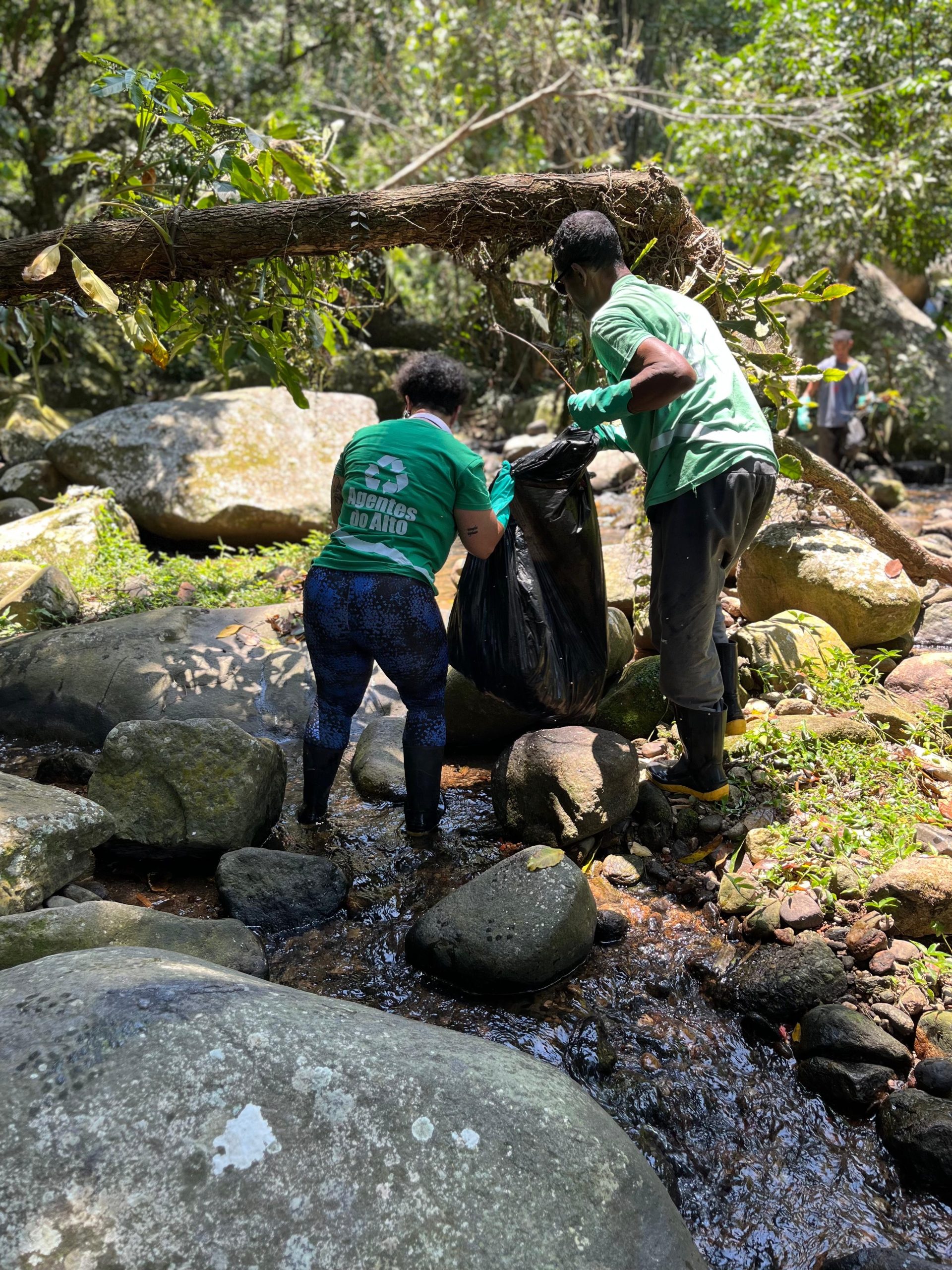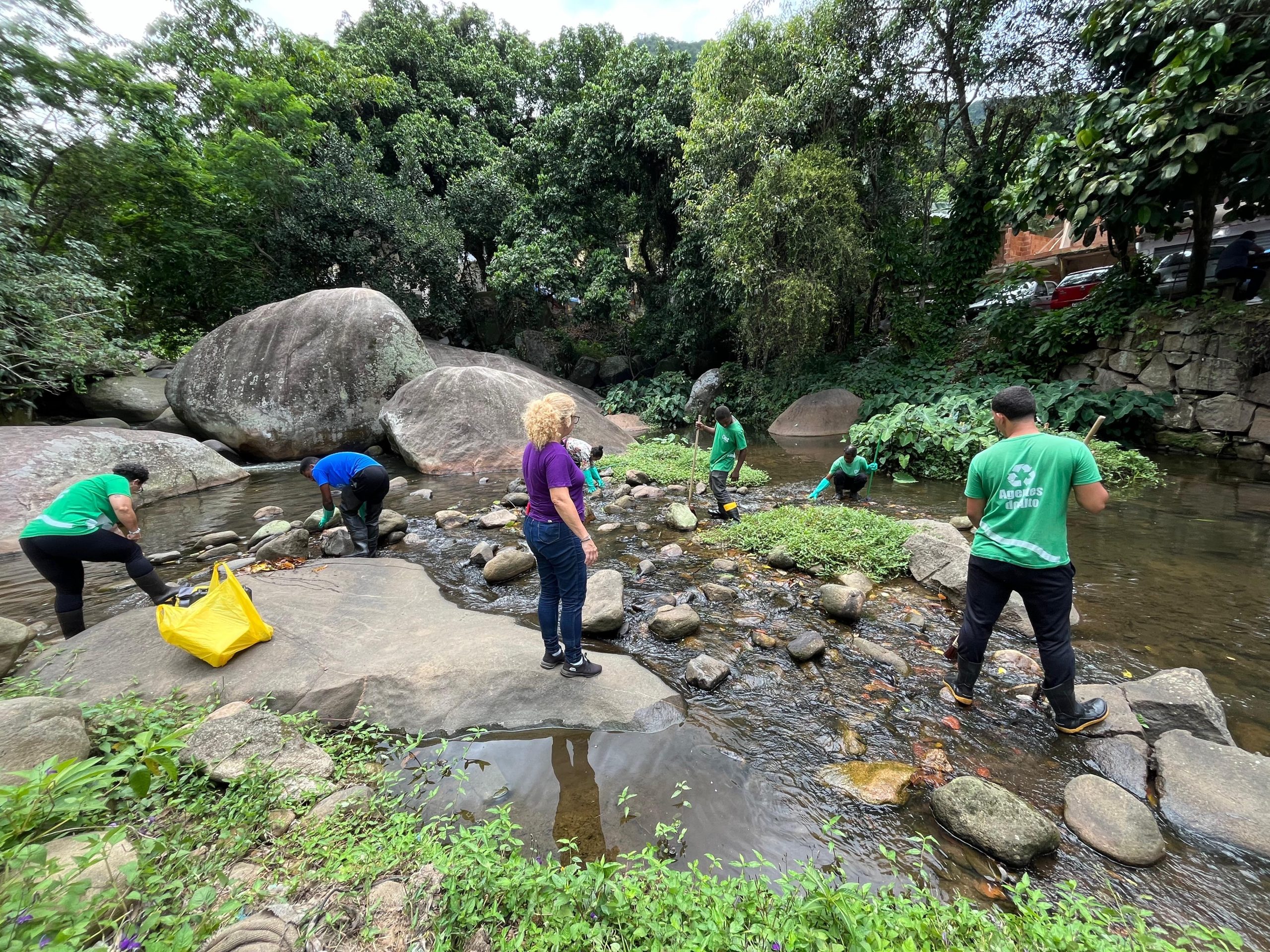 This article is part of a series created in partnership with the Behner Stiefel Center for Brazilian Studies at San Diego State University, to produce articles for the Digital Brazil Project on environmental justice in the favelas through RioOnWatch.
This article is part of a series created in partnership with the Behner Stiefel Center for Brazilian Studies at San Diego State University, to produce articles for the Digital Brazil Project on environmental justice in the favelas through RioOnWatch.
Clouds of blackflies are part of daily life for residents of the Forest Machado favela, in Alto da Boa Vistanear Tijuca Forest in Rio de Janeiro. To try to contain the proliferation of the insect, which has been negatively affecting their quality of life, residents organize monthly collective actions to clean up their stream, while realizing there is also need for government action.

“We can’t stay outside chatting. I have a daughter and I can’t play with her during the day. The blackflies are out from the time we wake up until 6pm,” says Cristiano Henrique de Jesus, 38, a resident of the region and coordinator of the Support and Integration Network (RSI)a local group that organizes the actions.
Blackflies, insects of the Simuliidae family, have a short life cycle. The female lives 45 days and can lay up to 2,500 eggs. The combination of forests, streams and waterfalls in Alto da Boa Vista, which have always produced the insect, along with the accumulation of garbagesewage in the waterways, and the improper use of fogging, favors an even greater reproduction of the species.
Residents who take part in the collective actions have borne the costs of the clean-up, an effort that also benefits wealthy downstream neighborhoods such as Barra da Tijuca, Itanhangá and Museumwhich receive the waters from these tributaries.
“We lack materials the city has: baskets, machetes, brooms to scrub the stones, garbage bags,” says de Jesus. With the infestation advancing into other neighborhoods, residents warn that efforts need to be broader and begin at the source—which is difficult with the absence of the State.
“We start at the upper part of the hill and work our way down. If other associations joined us in the collective action, they could come from other points, and that way we could clean the whole river.” — Cristiano Henrique de Jesus

Controlling Blackflies Requires Environmental Balance
Due to pollution and chemicals, many of the insect’s natural predators have disappeared, favoring its overpopulation. In October 2024, residents sought guidance from biologist Rosilene Alcântara, a specialist in environmental surveillance and vector control. She warned about the inappropriate use of fogging, common in the region’s private condominiums. “Fogging, used as an emergency solution, is not effective. In fact, it worsens the problem,” explains Alcântara.
“With fogging, we keep the blackflies away for a while, but kill those that should be helping control them. And then, when the insect returns, it finds an environment with no resistance whatsoever.” — Rosilene Alcântara
According to Alcântara, fogging kills dragonflies, small birds, frogs, and spiders, among others.
Cleaning the rivers by scrubbing rocks and removing waste is the “most effective and sustainable method of control,” according to the biologist. She advises that, as a complement, BTi (Bacillus thuringiensis israelensis) can be used—a biolarvicide that acts specifically on blackfly larvae without affecting their natural predators.

And still, the infestation keeps spreading. The spread of these insects has been reported in São Conrado, Rocinha, TijucaItanhangá, and even in the Maracanã region—some 11km (~7 miles) away. “They can fly up to 5km (~3 miles) and may also be carried on clothes, buses, or even backpacks. If ten females travel, that means as many as 25,000 eggs arriving in another neighborhood,” warns the biologist.
State Support Shows Up Once the Problem Reaches Barra da Tijuca
The president of the Mata Machado Residents’ AssociationMarcos Paulo Costa, 52, says that several requests for government support to combat the insects’ proliferation have been made.
“We’re abandoned by the government. Only now, with the outcry from affluent areashave they begun to offer some support, through [the municipal waste collection utility] Comlurb. ” – Marcos Paulo Costa
He stresses that technical action and training are essential, as well as raising resident awareness about improper waste disposal, which contributes to compounding the problem.
The Guardians of the River project, run by the Municipal Secretariat of Environment and Climate (SMAC), was supposed to invest in the preservation of such watercourses. Residents say the initiative was carried out precariously in their community. “All they gave me was a shirt and pants (with the program logo on them). How am I supposed to go into the river without boots or gloves?” asks Sinara Teixeira, 27, RSI coordinator and organizer of the collective actions.

In a statement, SMAC said that the program has not had active operations in the region since 2024, even while acknowledging the area’s importance. The Secretariat claims to be considering the possibility of resuming activities in the Mata Machado community. According to residents, however, the program is still purportedly underway in the region—but without the proper equipment for implementation.
While waiting for effective measures, residents continue to organize collective actions and demand a concrete response from the government. They hope that the Guardians of the River program resumes, this time including protective gear, adequate training, fair remuneration and coordinated actions with other affected regions.
About the author: Karen Fontoura is a journalism student at the Federal University of Rio de Janeiro (UFRJ), a resident of Rocinha, and a reporter for the community newspaper Roçawhere she coordinates the organization’s institutional and project communications. She works with audiovisual production, reporting, and the promotion of community initiatives.

